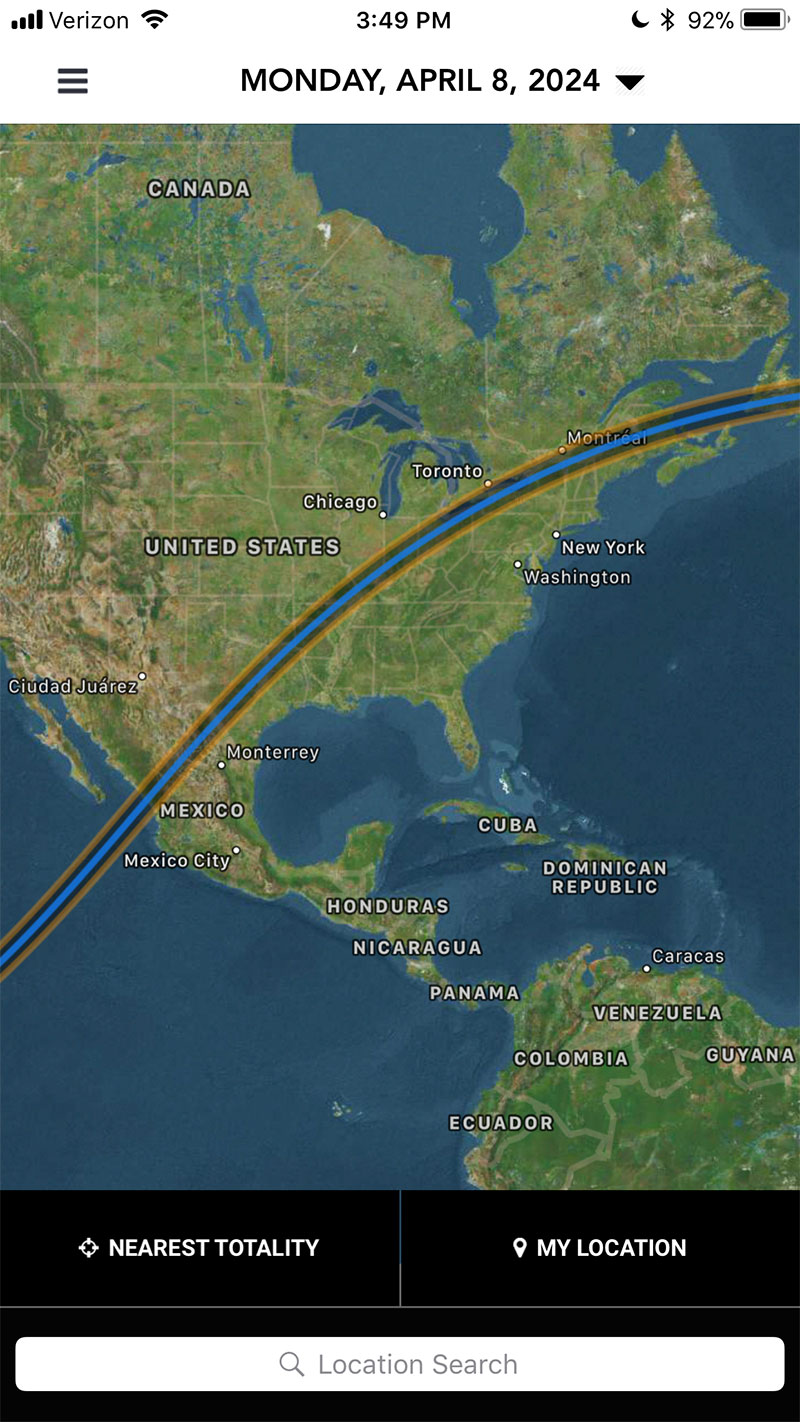See Totality!
A total solar eclipse is a spectacular sight (Figure 1). It begins when the disk of the Moon first appears to touch the Sun. Over the next couple of hours, the Moon appears to take a larger and larger “bite” out of the Sun. As totality approaches, the sky darkens and temperatures fall. Birds head back to their nests, and crickets begin their nighttime chirping. During the few minutes of totality, the Moon completely blocks the visible disk of the Sun, allowing the faint corona to be seen. The surrounding sky takes on a twilight glow, and planets and bright stars become visible in the daytime. As totality ends, the Sun slowly emerges from behind the Moon. However, because your eyes have adapted to the darkness, totality appears to end far more abruptly than it began.
Unfortunately, most people never get to see a total solar eclipse, because the small size of the Moon’s full shadow makes these eclipses rare at any particular location. However, a total solar eclipse occurs somewhere on Earth every one to two years, so you should consider planning to travel to one in the future, particularly if one occurs near you. For example, students in the United States should plan ahead to see the total solar eclipse that will occur on April 8, 2024, following the path shown in Figure 2 below.

